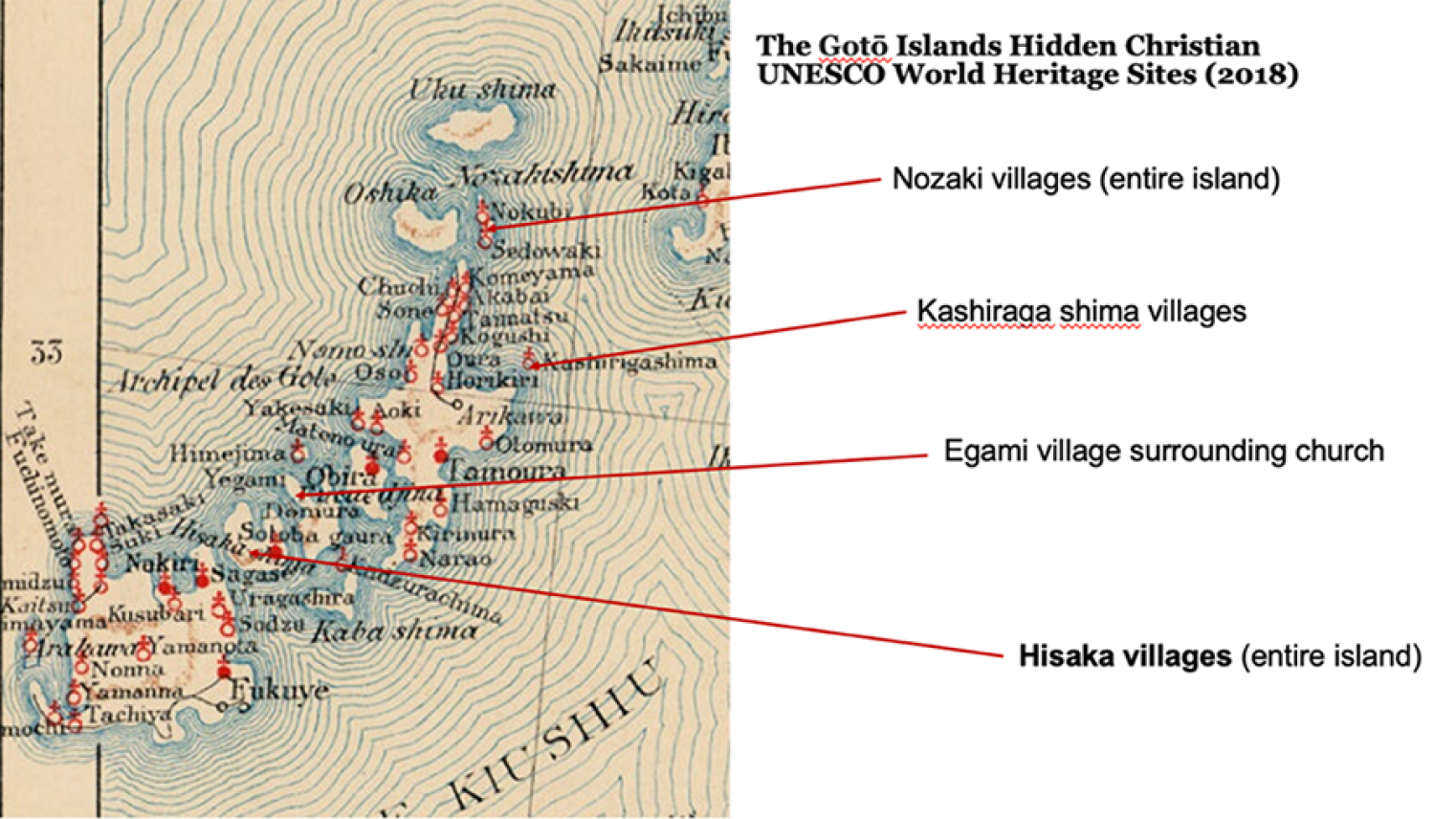The ANU Japan Institute Seminar Series showcases cutting-edge research by leading and emerging scholars based primarily in Australia and Japan. It aims to promote networking among Japan Studies scholars in the two countries and will feature innovative research on the bilateral relationship.
What about the Kakure? Going beyond the 2018 Hidden Christian World Heritage sites in the Gotō Islands, Nagasaki
In this presentation I discuss my ongoing research in the Gotō Islands off Nagasaki, interviewing descendants of Japan’s Hidden Christians. In 2018 UNESCO registered twelve components as '潜伏キリシタン世界遺産 (Senpuku in the Japanese) Hidden Christian World Heritage sites' across the regions of Nagasaki and Amakusa. However, by using the Japanese language name ‘Secret’ as Sempuku indicating the Hidden Christians prior to 1873 in the World Heritage nomenclature, the living culture of the Kakure Kirishitan (Hidden Christians 1873-) was elided. Through interview evidence collated on Naru Island, I will examine in this talk some evidence of a turn toward Christianity by the Kakure, while re-evaluating the importance of Kakure heritage.
How might the hybrid nature of Kakure heritage be understood? One argument is that distance from Christianity has increased over time for Kakure Kirishitan communities, and is insurmountable, as they are utterly ‘estranged from Christianity’ (Miyazaki 2001). Yet interviews suggest that this is not the case and there is a turn toward Christianity even today.
In an interview conducted with Iwamura Sadako (1948-) on Naru Island in 2022 she recalled her father-in-law, Iwamura Yoshinobu (1900-?) and the documents and material objects he had treasured. Iwamura Yoshinobu was said to be the ‘last chōkata’ or ‘Keeper of the Books’ on Naru Island, as filmed by anthropologist Christal Whelan in the documentary movie, Otaiya (Otaiya 1997; Whelan 1992). What made Sadako more emotional was that she and her husband could not say plainly to her father-in-law that they would not be able to continue the religious practices that he had carefully maintained for so many years. Sadako’s memory of the dilemma she faced as Yoshinobu was on his deathbed was emotionally charged, raising difficult questions about the heritage of the Kakure Hidden Christians as they face impending loss of communal practice and ritual. I argue that heritage work should not only guide preservation, but also assist in coming to terms with loss.
Speaker:
Dr Gwyn McClelland is Senior Lecturer in Japanese Studies at the University of New England, Armidale (Anaiwan Country). As an oral historian, Gwyn conducts research engaging with religious discourses in memory, history, theology, and sensory studies. His first monograph was published in 2019 by Routledge, Dangerous Memory in Nagasaki: Prayers, Protests and Catholic Survivor Narratives. He was co-editor with Dr Hannah Gould (University of Melbourne) of the 2023 edited collection, Aromas of Asia: Exchanges, Histories, Threats (Penn State University Press) in the Perspectives on Sensory History Series edited by Mark M Smith.
Gwyn was awarded a 2022 Japan Foundation Long-term Fellowship to examine UNESCO World Heritage ‘Hidden Christian’ sites within the Gotō Archipelago and is currently working on his associated book project: tentatively, Pure Land to Hell: Hidden Kirishitan, the Goto Islands, and World Heritage.
Image: Fragment of MEP (Paris Mission) Map, 1890, that shows the 2018 World Heritage sites, National Library of Australia
Light refreshments at 12.50pm.
Contact the ANU Japan Institute Seminar Series Convener: Dr Andrew Levidis at andrew.levidis@anu.edu.au
Sign up to the ANU Japan Institute mailing list.
The ANU Japan Institute Seminar Series is supported by the Australian Government through the Australia-Japan Foundation of the Department of Foreign Affairs and Trade.

